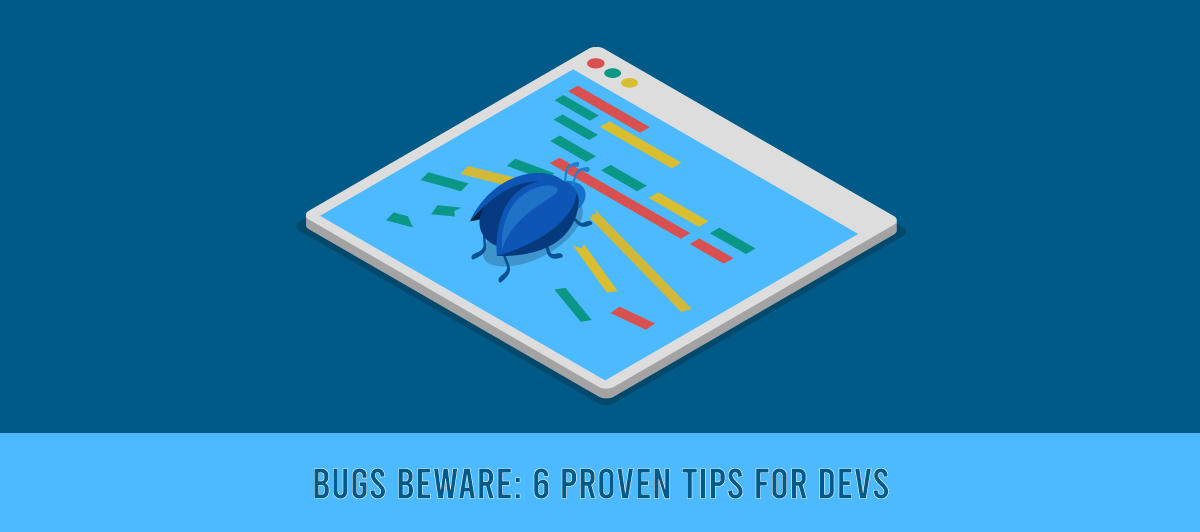6 Proven Tips To Prevent Software Bugs For Developers
Quick Summary: Prevent software bugs like a pro! Discover six tried-and-true tips that every developer should know. These strategies will help you deliver flawless software, from thorough code reviews to automated testing. Don’t let bugs derail your projects; implement these proven techniques and watch your code quality soar. Your users will thank you for it!
Introduction
Are you tired of those pesky software bugs wreaking havoc on your projects, causing delays, and frustrating your users? But that is not a big deal, and we can resolve that.
Software bugs occur when some mistakes occur in programming; below are some essential tips to prevent software bugs.
These six proven tips are your secret weapons to build robust, reliable software that meets and exceeds user expectations.
So, Say goodbye to those frustrating bug hunts and hello to smoother, more successful software development projects. And become one of the Top Software Development Services.
Read on!
What Are Software Bugs?
You can consider the definition of bugs in software as the bane of technology, causing chaos by disrupting programs. These glitches stem from coding mistakes, triggering unpredictable behavior and crashes. They erode trust and harm reputations, hitting businesses where it hurts – their bottom line. Yet, they aren’t just problems; they’re opportunities.
Spotting and fixing bugs ensures software runs smoothly, showcasing dedication to quality and customer happiness. Embracing bug hunting is essential in delivering top-notch, reliable software. In today’s tech-centric world, it’s a competitive edge you can’t ignore.
What Are The Types Of Software Bugs?
Software bugs come in various forms, each impacting the efficiency of your programs:
- Logic errors Challenge the program’s reasoning, disrupting its intended flow.
- Syntax errors: Simple yet disruptive mistakes, such as missing semicolons or parentheses.
- Runtime errors: Occur during execution, causing crashes or unexpected behavior.
- Memory leaks: Drain system resources, leading to slowdowns or crashes.
- Boundary errors: Arise when input exceeds predefined limits, jeopardizing security.
- Concurrency bugs: Wreak havoc in multi-threaded applications, causing unpredictable outcomes.
Why Do Bugs Occur In Software?
1.Complexity
Modern software is incredibly intricate, with millions of lines of code interacting in countless ways. Predicting every potential interaction is nearly impossible, leading to unexpected issues.
2.Human Error
Software development involves humans, who are prone to making mistakes. Even the most skilled programmers can overlook a small detail or need to understand a requirement, resulting in a bug.
3.Changing Environments
Software operates in a dynamic environment with various operating systems, hardware configurations, and external dependencies. Changes in any of these components can introduce compatibility issues.
4.Tight Deadlines
It is frequently under pressure to deploy software swiftly in today’s fast-paced world. This can lead to insufficient testing and debugging time, increasing the likelihood of bugs slipping through.
5.Evolution of Requirements
As user needs change, software must adapt. This can lead to code modifications introducing new issues or conflicts with existing functionality.
6.Legacy Code
Many software projects inherit legacy codebases, which may have been developed years ago with outdated practices. These can be difficult to maintain and can hide lurking bugs.
7.Third-party Components
Software often relies on libraries and APIs from third parties. Changes or bugs in these components can affect the software’s overall functionality.
8.Concurrency and Multithreading
In multi-threaded applications, the complexity of managing concurrent processes can result in subtle and hard-to-detect bugs.
9.Security Vulnerabilities
The evolving nature of cybersecurity means that fresh vulnerabilities are consistently found. Conducting vulnerability scans is crucial to identify and address these threats, as software may need frequent updates, potentially introducing new issues.
10.User Diversity
Users have varying preferences, configurations, and usage patterns. What works flawlessly for one user may trigger a bug in another’s unique environment.
Tips To Prevent Software Bugs For Developers
Try this bug fixing strategies:
1.Consider Yourself As A User, Not A Programmer
To remove bugs in programming, every programmer must think like an end-user who will use the software to get an idea if they feel like an end-user quickly. If the user enters this type of data, they also need to handle it in the system so the programmer can easily create code.
For instance, If the programmer creates one registration form at that time, the user may enter the wrong mobile number, so the programmer needs to think like the user and put in code to validate the mobile number.
2.Need To Cover All Scenarios For Testing
Every programmer or developer needs to prepare all test cases from their side, including all positive and negative patients. Based on all test cases, the developer needs to develop a code.If anywhere needs to put an if-else condition, then the developer must test with correct and incorrect data to get the idea that the other situation also works fine; otherwise, time error will occur from the other part.
To assist in this thorough testing, developers can refer to a comprehensive list of software testing tools, that can help automate the testing process, ensuring that all scenarios, both expected and unexpected, are adequately covered. Utilizing these tools can prevent potential errors and enhance the overall quality of the software.
3.Use Quality Code
Every programmer must know Quality Code if the developer writes quality code so they can avoid common pitfalls. Quality Code also helps to fix the bug.
4.An Experienced Person Must review the Code
Sometimes, developers work with deadlines, so they can only check some things in the code. That’s why, before the code commitment, it needs to be code-reviewed by an experienced person. The reviewer must have good knowledge and experience about all things done by the developer. If any third person reviews the code, they can not find the bugs, and bugs are occurring.
5.Don’t Be Nervous When Bugs Occur In Your Code
We all know that if any bug occurs in a particular person’s development at that time, that person will be nervous and will not accept their mistakes. So, in the end, the bug is not a big deal; everyone can resolve that. Therefore, there is no need to be nervous; be normal and try this bug fixer.
So, If any mistakes or bugs occur, take them positively and learn something from them.

6.Must Clear With All Requirements
Every developer must understand all requirements clearly because they need more clarity on requirements to develop something else, which is a complete waste of time. So, take your time to thoroughly understand all conditions, as it is helpful for development and speeds up the process.
Conclusion
In the world of software development, where bugs can be the bane of our existence, our journey through these tips to prevent software bugs for developers has been nothing short of transformative. As we conclude, it’s crucial to remember that pursuing bug-free code is not a destination but an ongoing commitment.
FAQ
How do software developers avoid software bugs?
Software developers can avoid software bugs by following best practices, including thorough testing, code reviews, and using coding standards. They should document code, practice defensive programming, and use automated testing tools. Continuous learning and debugging skills are also crucial to catch and fix bugs early in the development process.
What are bugs and how to control bugs in software testing?
Bugs are defects or errors in software that cause it to malfunction. To control bugs in software testing, testers use systematic approaches like test planning, design, execution, and reporting. They create test cases, perform rigorous testing, and automate tests where possible. Collaboration with developers, thorough documentation, and regression testing help identify and address bugs effectively.
How do software developers solve problems?
Software developers solve problems by following a structured approach. They first understand the problem, gather requirements, and design a solution. Then, they write and test code iteratively, debugging as needed. Collaboration and research are crucial. Developers also use problem-solving techniques, like breaking problems into smaller parts, to address challenges efficiently.
How can software bugs be removed?
Software bugs can be removed by following a systematic process. First, identify the bug through testing and user reports. Then, isolate and reproduce the issue to understand its root cause. Finally, fix the bug by making necessary code changes, thoroughly testing the fix, and deploying the updated software version to users.
Types of bugs?
Software bugs can be removed by following a systematic process. First, identify the bug through testing and user reports. Then, isolate and reproduce the issue to understand its root cause. Finally, fix the bug by making necessary code changes, thoroughly testing the fix, and deploying the updated software version to users.





